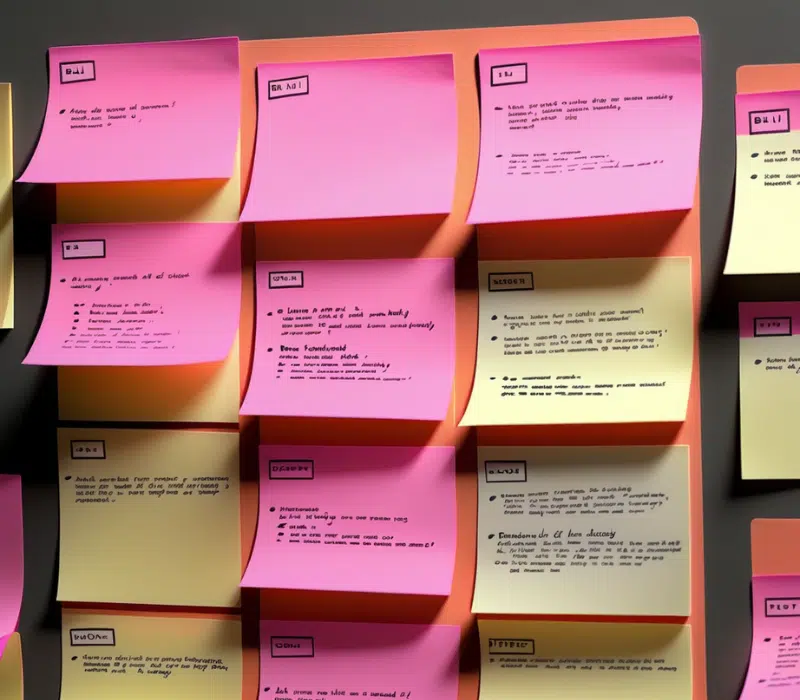Design thinking is a process and mindset that centers around understanding customers’ needs before designing product solutions and messaging.
It’s a five-step process that includes empathizing, defining, ideating, prototyping, and testing. With design thinking, you can leverage research to better understand your customer base, develop creative solutions to their problems, test prototypes of these solutions, and gain valuable insight into what works — and what doesn’t.
On our webshow SpeedBumps Live!, our co-founder Javier Santana interviewed Senior Experience Designer Mario Soley. They unpack the concept of design thinking and how marketers can capitalize on it. Check out this clip.
The 5 Phases of Design Thinking
The best way to understand design thinking is through its five steps:
- Empathizing: gathering data about customer needs and preferences
- Defining: identifying the design challenge
- Ideating: generating ideas for solutions
- Prototyping: creating and testing potential solutions
- Testing: getting feedback from customers
Empathizing
The first step in design thinking is empathizing — putting yourself in the shoes of the end-user. This looks like understanding their goals, motivations, pain points, and more to determine the most helpful design solutions.
To achieve this, you should use tools like surveys, customer interviews, focus groups, and analytics. Collect qualitative and quantitative data that will inform your design process.
The insights gathered from talking to your customers can help you better understand who they are and how they think. Getting to know the people interacting with your product or service and how they behave lets you ultimately design better solutions that meet their needs.
Defining
The defining phase of design thinking is all about identifying the main problems and challenges to solve.
This step involves taking your customer research insights from the empathizing phase and creating a concise problem statement. This information helps your team stay focused on what you’re trying to solve and acts as the foundation for the rest of the design thinking process.
The defining phase often involves brainstorming, mind mapping, and other ideation techniques to refine the problem statement. During this stage, stay open-minded and evaluate all information to ensure the foundation problem statement addresses your customers’ wants and needs.
Ideating
The ideating phase of design thinking is about generating ideas and solutions to the design challenges found in the defining phase. It’s a crucial step in design thinking, as it’s an opportunity for creative problem-solving.
During this phase, you can explore different ways to approach challenges, brainstorm potential solutions with your team, and come up with unique perspectives on how to solve the design problem.
This stage encourages exploration without constraints or limitations. Let your imagination run wild! By using different techniques and getting creative, your team can ideate innovative solutions.
It’s also important to conduct competitor research to understand other companies’ strategies for reaching their goals. With this additional research, you gain insights into potential opportunities you may have overlooked.
The end goal is to generate a wide range of potential ideas that can be further tested and evaluated in later stages.
Prototyping
The prototyping phase is where you get creative and test out potential solutions.
This stage requires you to produce a prototype that reflects the eventual outcome. It’s essential for visualizing and examining what your finished product will look like. It’s an excellent opportunity to try fresh approaches, explore design options, and experiment with different materials.
It’s also a great time to start collecting customer feedback so that you can make adjustments as needed.
You can gain valuable insights into how well design solutions work for your target audience by testing prototypes in various ways.
Testing
The final stage of design thinking is testing. It’s all about getting feedback from customers. This is where you validate your solutions through real-world testing and gain insights into what works and doesn’t.
Testing allows you to ensure that your design meets customer needs and expectations before launching it into the market. The end goal is to create an effective, efficient, and desirable design solution.
During this phase, you can also identify any potential flaws or opportunities for improvement before launch.
By actively engaging with customers throughout this stage of design thinking, you can ensure you’re creating experiences that customers will find helpful and enjoyable.
Once you’ve gathered all of this information, it’s time to start again with brainstorming ideas and prototyping. Design thinking is more of a cycle rather than a series of steps. Continuing to reevaluate designs and go back through the process allows you to update designs as customers’ behavior shifts.
The Benefits of Using Design Thinking for Marketing Solutions
Using design thinking in marketing can be beneficial in a variety of ways.
It enables marketers to design solutions uniquely tailored to their customer base, test solutions with honest customer feedback, and rapidly iterate strategies based on this feedback. This allows for faster development cycles, more creative problem-solving, and better customer engagement.
Design thinking puts the focus back on understanding customers — not just selling to them. The process has also proven to help increase revenue and reduce costs as effective solutions address underlying problems instead of treating symptoms.
By working smarter, not harder, marketers can design cost-effective campaigns that have a positive impact and deliver the best ROI.
Getting Started With Design Thinking
If you’re looking to get started with design thinking, there’s no better place to start than gathering data.
Begin by empathizing. Conduct customer research and analyze competitor strategies to gain valuable insights into how your customers feel and what potential opportunities exist.
Then move through the rest of the design thinking phases. Start brainstorming ideas for solutions and design a prototype to be tested on real customers. Remember to gather feedback from customers when testing your design. This will help you refine the design and ensure it meets their needs.
Design thinking can be a powerful tool for marketers. The process of empathizing, defining, ideating, prototyping, and testing can give marketing teams the ability to design solutions that work for their customers.
Understanding your customers’ needs, goals, motivations, and challenges — paired with in-depth competitor research — will help you design effective communication strategies that positively impact ROI.
With design thinking as part of your marketing toolkit, you’ll be able to design cost-effective campaigns that your target audience wants to experience.




